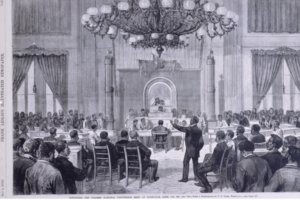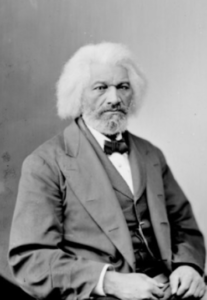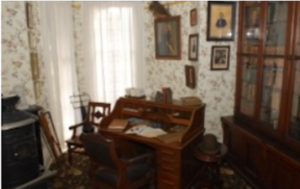I decided to focus my Multimodal Project on Reconstruction. I used various photos from the Smithsonian Museum. I also wrote a poem.
Reconstruction was the time period after the Civil War. The Civil War was a war that was fought from 1861-1865. During the Civil War the Norther and Southern countries fought due to their different opinions towards slavery. While the Norther countries wanted to end slavery, the Suthern countries wanted to continue slavery. Thus, this led the Southern states to start seceding. Below are some pictures that were taken during the period of Reconstruction. All picture credits go to the Smithsonian Museum.

This is a picture that appeared in Frank Leslie’s illustrated newspaper on March 5th 1876. This picture shows the Colored National Convention in Nashville 1876
The Colored National Convention allowed for African Americans to come together where they discuss ways in which they can attain racial justices. These conventions consisted of mainly black Americans and a few women as well. Women participated through their writing as they participated in newspapers. In David’s Blights Something Far Beyond the Battlefield, he mentions Douglass’s claim that it is necessary for black people to remember the Civil War and all that has happened there. He also mentions that we should honor those who have fought for slavery and justice. The picture above doesn’t necessarily show people fighting in the Civil War, but it does show black Americans coming together in order to reform society. Douglass mentions how we have to honor those who have fought for justice and the people in the Colored National Convention did exactly that and they should not be forgotten. “Douglass expressed the pain of being black in America: wherever a black man aspired to a profession, ‘the presumption of incompetence confronts him, and he must either run, fight, or fall before it”’” (Blight For Something Beyond the Battlefield, 1171). Here Douglass is saying that whenever black people want to achieve something there are often many setbacks that occur. These setbacks arrive due to the fact that they are assumed to be incompetent’s which makes it harder for them to achieve greatness. Douglass mentions how the average black man when he wants to achieve something must either accept, or fight for what they want. It’s as if the past is what dictates the lives of African Americans. Douglass tries to assert power of memory in order to inform and inspire further generation.


Frederick Douglass (1818-1895) was born in Michigan into a plantation system and he was a former slave. Douglass was known for being an abolitionist and he was involved in many reform movements playing a very important figure in black history. Douglass made sure that the black perspective wasn’t only used for the Civil War but that it was used for American history in general. Douglass once asked the question “If war among the whites brought peace and liberty to the blacks, what will peace among the whites bring?” The Civil war brought together many whites which caused for there to be peace within the blacks, however, what happens after that? If there were peace within the whites what would that mean to American history? In David Blights “What Will Peace Among Whites Bring”, Blight attempts to focus more on race and being unified and its meaning in the Civil War. He demonstrates the relationship between race and being unified by using examples from Frederick Douglass. He mentions that society uses history to understand its identity. He also mentions that “the war was remembered as primarily a tragedy that led to greater unity and national cohesion…not as the terrifying crisis of a nation deeply divided over slavery [and] race…” (403). Here Douglass provides us with a reason as to why we need to honor those who have fought for slavery because it was because of them that the Civil War had occurred. If these abolitionists hadn’t spoke up about the issues of slavery, then the Civil War wouldn’t have existed. Fredrick Douglass was a very influential abolitionist. Today there is a historic home dedicated to him.
In Blights, What Will Peace Among Whites Bring, Blight uses the examples of Alexander Crummell and Frederick Douglass. He mentions how “For Douglass, emancipation and the Civil War were truly felt in history. For Crummell, they were a passive memory, not an epic to be retold” (399). Alexander Crummell is an African-American minister and a nationalist. This quote shows the difference in how the two figures viewed the Civil War. Douglass thinks that the Civil War needs to be remembered as something of importance of African history, while Crummell believes that the Civil War was nothing but a memory and that it doesn’t do much for African American culture and history.

In Alexander Crummel’s The Race Problem in America, Crummell brings up the racial problem in America as well as what we can do to fix these problems. He discusses the ideas that in order to fix these racial problems, African Americans must fully participate in the American demcratic life. Crummell asks “has a new race, the product of our diverse elements, sprung up here in America? Or, is there any such probability for the future?” (Marable & Manning 151). Here Crummell is basically asking whether having a diverse set of eyes can help with the improvement of the future. Crummell’s main idea in his writing is that the only way for us to solve the problems within society, we all need to come together to figure out a way in which we could change the way the government is run. During the Civil War the whites came together and helped out the blacks by fighting for the end of slavery. This later led to Reconstruction. Crummell’s ideas that in order to fix racial issues everyone needs to come otgether and have a part in shaping the government was put into perspective as not only did were the whites fighting a war to end slavery, they were also coming together to help change black history in general.

Through various abolitionists, black people were able to be freed. Reconstruction helped end slavery and this allowed for black Americans to have gain many rights. After reconstruction congress passed through the 15th Amendment which ensured every citizen with the right to vote. Because of this because passed on, now black Americans were allowed to vote making their voices be more heard. Though slavery had ended and Reconstruction had begun, history always seems to repeat itself.
Work Cited Page
David W. Blight, “For Something beyond the Battlefield”: Frederick Douglass and the Struggle for the Memory of the Civil War.” Journal of American History 75:4 (1989), pp. 1156-1178
David Blight, ‘”What Will Peace Among The Whites Bring?’: Reunion and Race in the Struggle over the Memory of the Civil War in American Culture.” The Massachusetts Review, 34:3 (1993), pp. 393-410.
Manning Marable and Leith Mullings, Let Nobody Turn Us Around: An African American Anthology. 2nd
ed., Lanham, MD: Rowan and Littlefield, 2009, pp. 151
National Park Service . Frederick Douglass Historic Home and Visitors Center. National Historic Site District of Columbia, www.nps.gov/frdo/learn/historyculture/collections.htm.
Smithsonian Museum . 150 Years And Counting. Frances Albrier Collection, http://nmaahc.si.edu/explore/exhibitions/reconstruction/voting-rights#Reconstruction
University of Delaware . About The Colored Convention. Delaware, University of Delaware, http://coloredconventions.org/about-conventions/
Multimodal Poem:
Link if audio doesn’t work: https://docs.google.com/presentation/d/1lfhhqmDi3P0ls0kjexYj2hcrbTYXcMGUKJNUWvZK0N4/edit#slide=id.p


